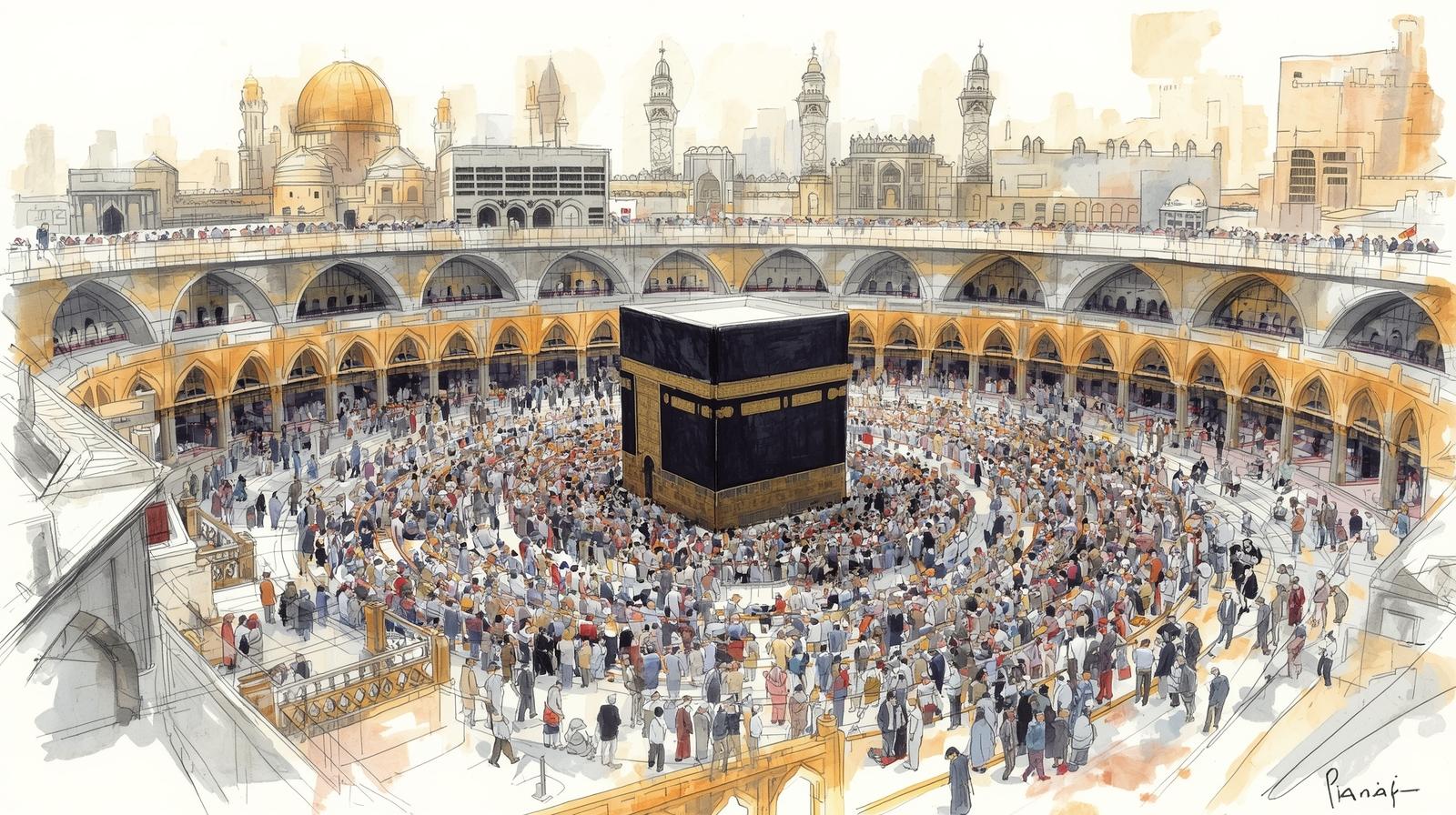The history of the Hajj is deeply rooted in Islamic tradition and stretches back thousands of years.
- Prophet Ibrahim (Abraham): According to Islamic belief, the Hajj rituals originate from the time of Prophet Ibrahim. He was commanded by God to leave his wife Hajar (Hagar) and their infant son Ismail (Ishmael) in the desert valley of ancient Mecca. In a desperate search for water for her son, Hajar ran seven times between the hills of Safa and Marwa. A spring of water, now known as the Zamzam Well, miraculously gushed forth from the ground. God later commanded Ibrahim to build the Kaaba—the cubic building in Mecca that is considered the most sacred site in Islam.
- Pre-Islamic Era: In the pre-Islamic era, the Kaaba was a site of pilgrimage for pagan Arabs, and it became surrounded by idols.
- Prophet Muhammad: In 630 CE, Prophet Muhammad led his followers from Medina to Mecca, cleansed the Kaaba of its idols, and rededicated it to the worship of one God. In 632 CE, shortly before his death, he performed his final pilgrimage, establishing the rites of the Hajj as they are practiced today. This event solidified the Hajj as a pillar of Islam.
- Medieval Period: During the medieval period, pilgrims would gather in large caravans from cities like Damascus, Cairo, and Baghdad to make the journey to Mecca. These caravans, often under the protection of a military escort, would follow well-established routes to ensure the safety of the pilgrims.
Significance of the Hajj
The Hajj holds immense significance for Muslims, both individually and collectively.
- A Pillar of Islam: The Hajj is the fifth and final of the five pillars of Islam, which are the fundamental acts of worship for Muslims. Completing the Hajj is a fulfillment of a divine command and a demonstration of a Muslim’s devotion and submission to God.
- Spiritual Renewal and Forgiveness: The Hajj is seen as a journey of purification and repentance. It is believed that a sincere Hajj can cleanse a person of all their past sins, allowing them to return home with a renewed sense of purpose and a clean slate.
- Unity of the Ummah: The pilgrimage brings together millions of Muslims from every corner of the globe, regardless of their race, nationality, or social status. All pilgrims wear simple white garments known as ihram, which symbolizes equality before God and erases all distinctions of wealth or social standing. This global gathering fosters a powerful sense of brotherhood and sisterhood, reinforcing the unity of the worldwide Muslim community, or ummah.
- Commemoration of Prophets: The Hajj rituals commemorate the trials and devotion of several prophets, most notably Prophet Ibrahim, his wife Hajar, and their son Ismail. The acts of circling the Kaaba, walking between Safa and Marwa, and the symbolic stoning of the devil all reenact historical events from their lives, serving as a reminder of their unwavering faith and obedience to God.
- Personal Growth: The Hajj is a physically and mentally demanding journey that tests the patience, perseverance, and self-discipline of the pilgrim. It is an opportunity for profound personal reflection and growth, inspiring pilgrims to lead more virtuous and spiritually conscious lives.
Sources

